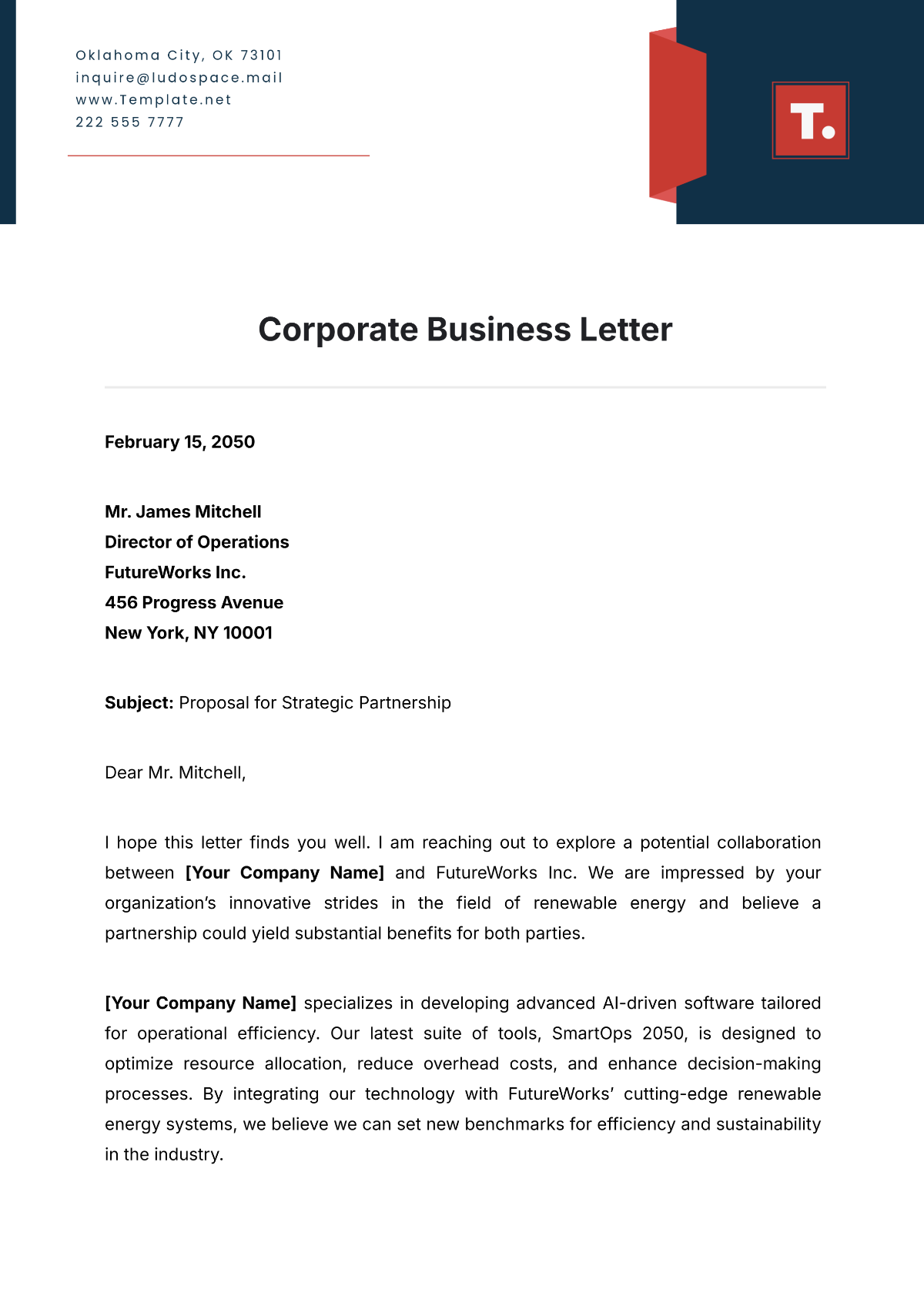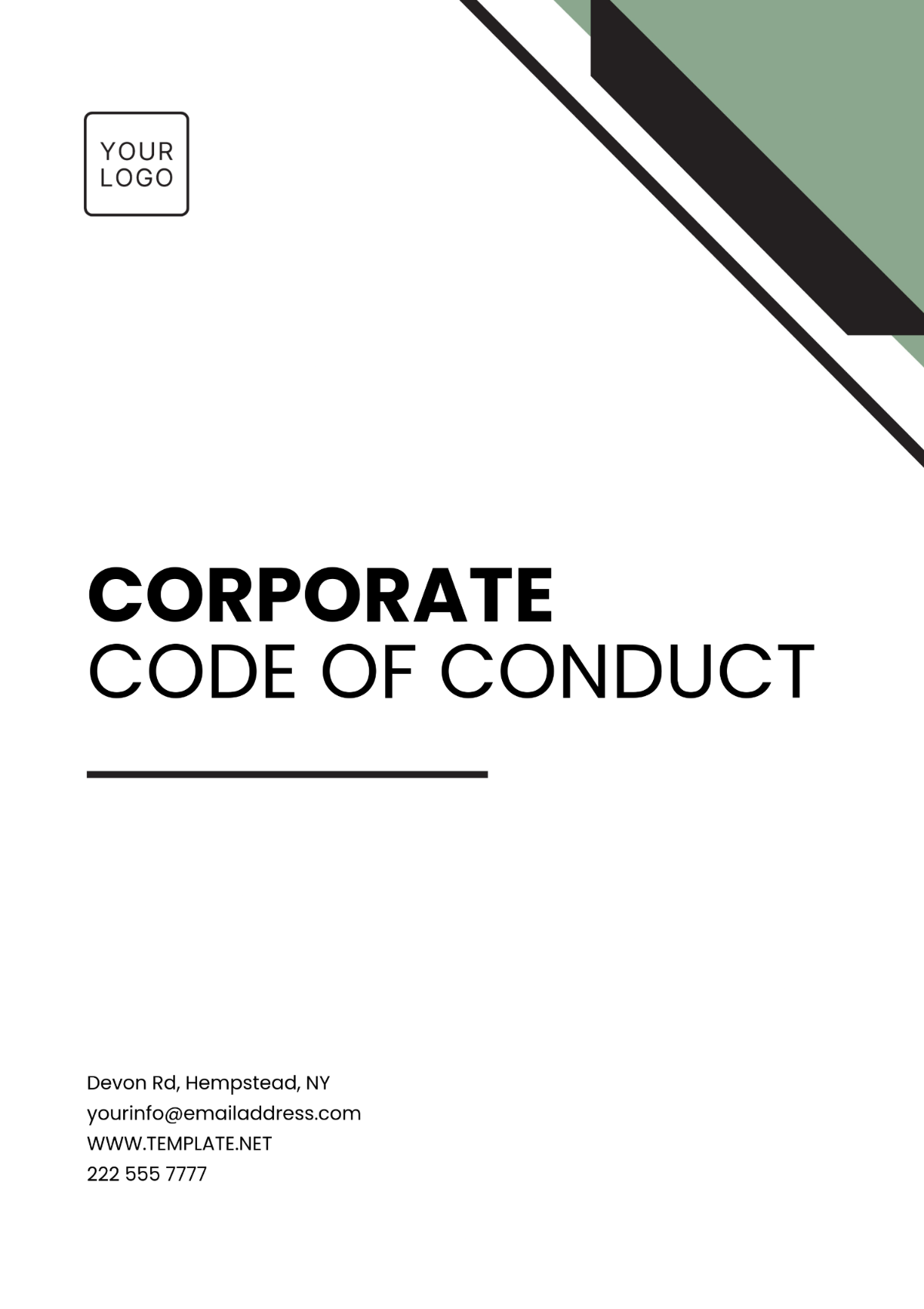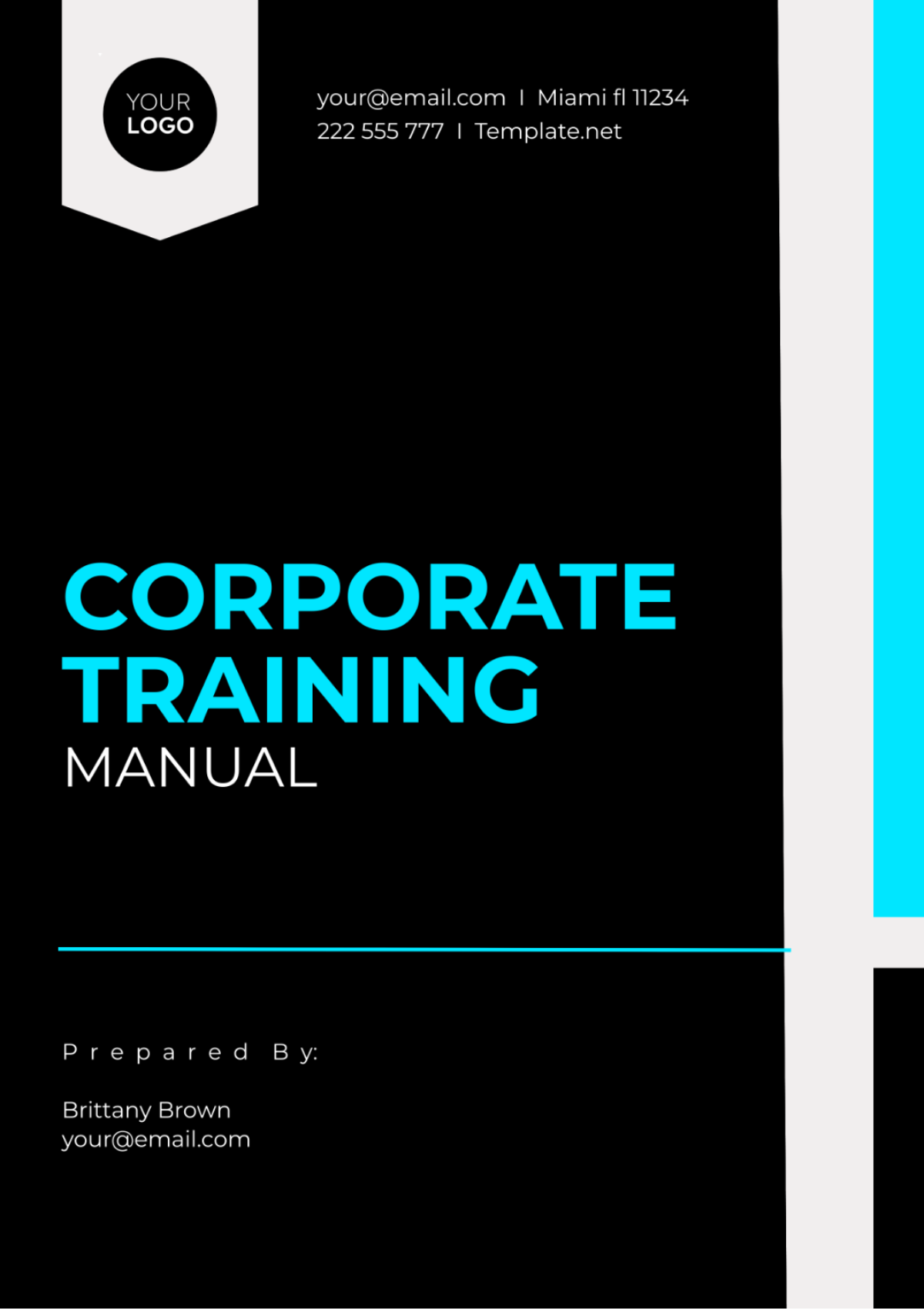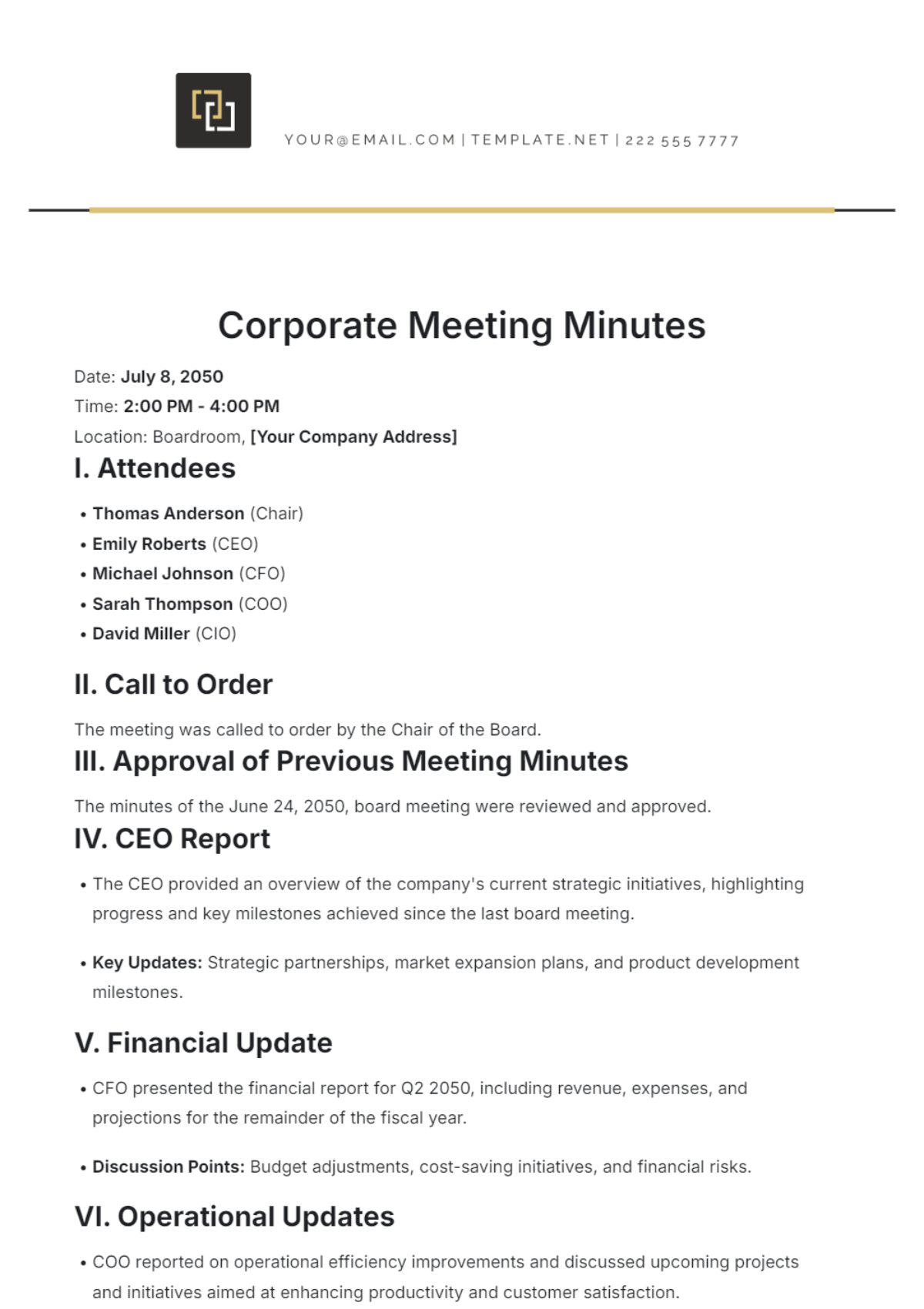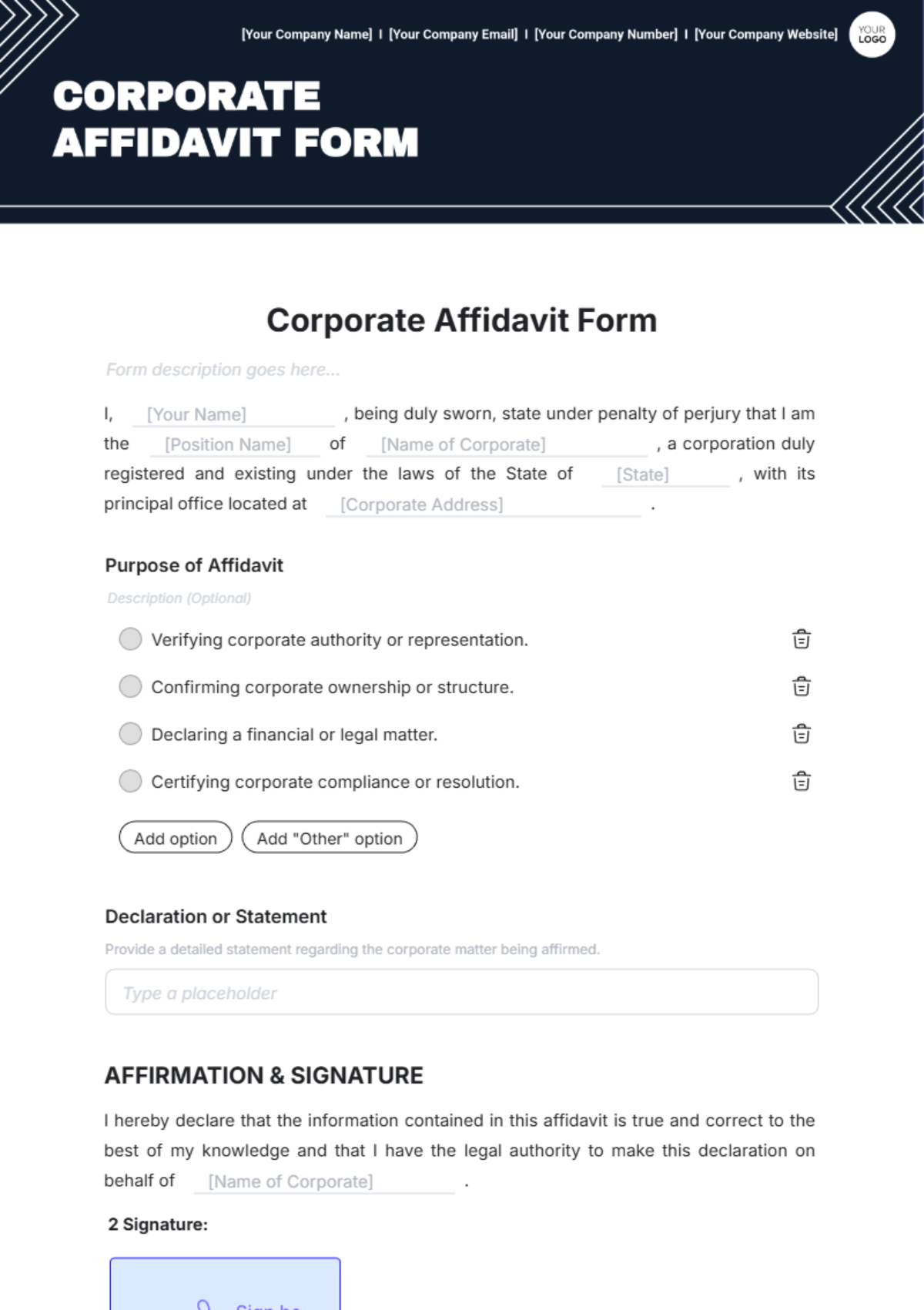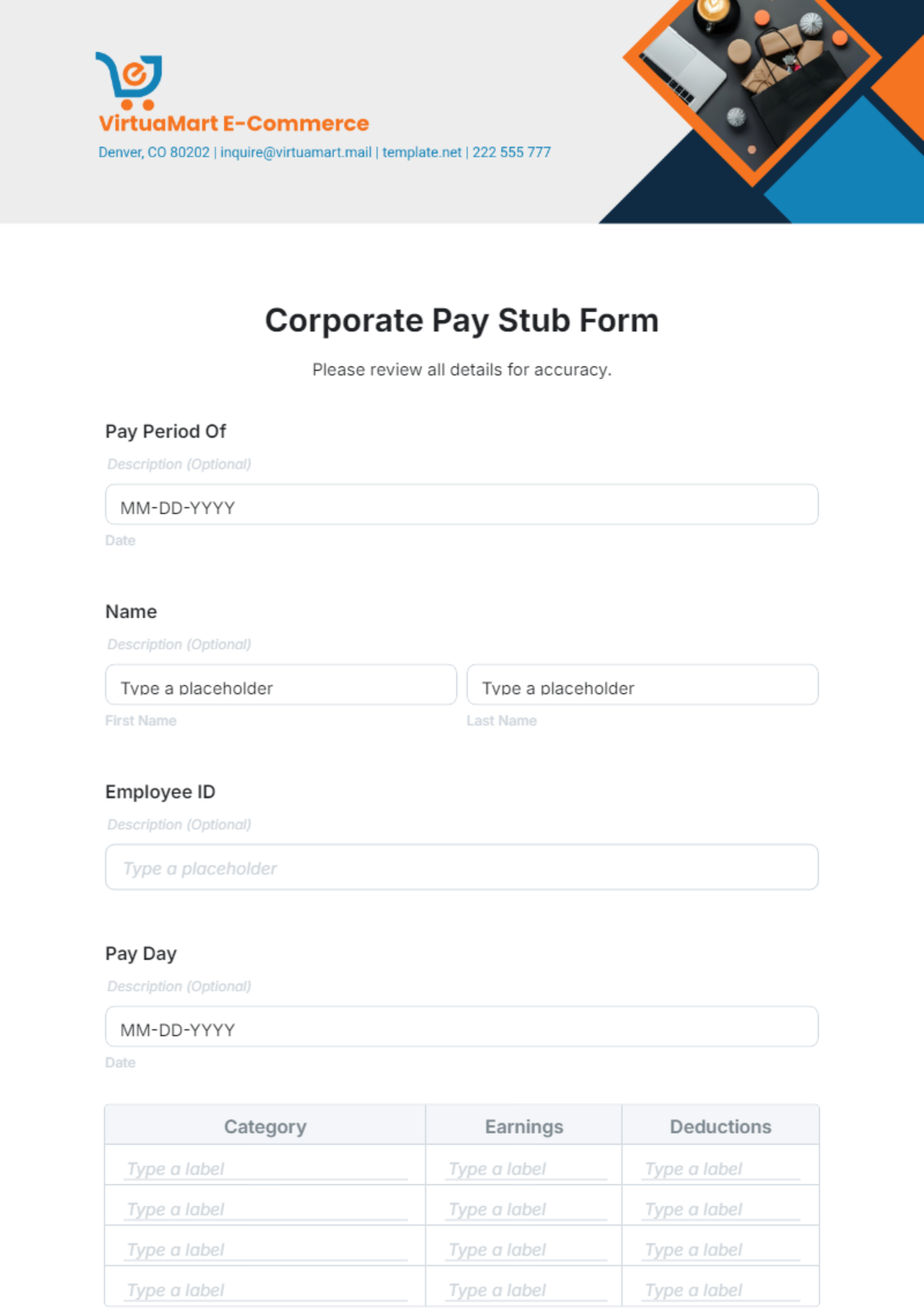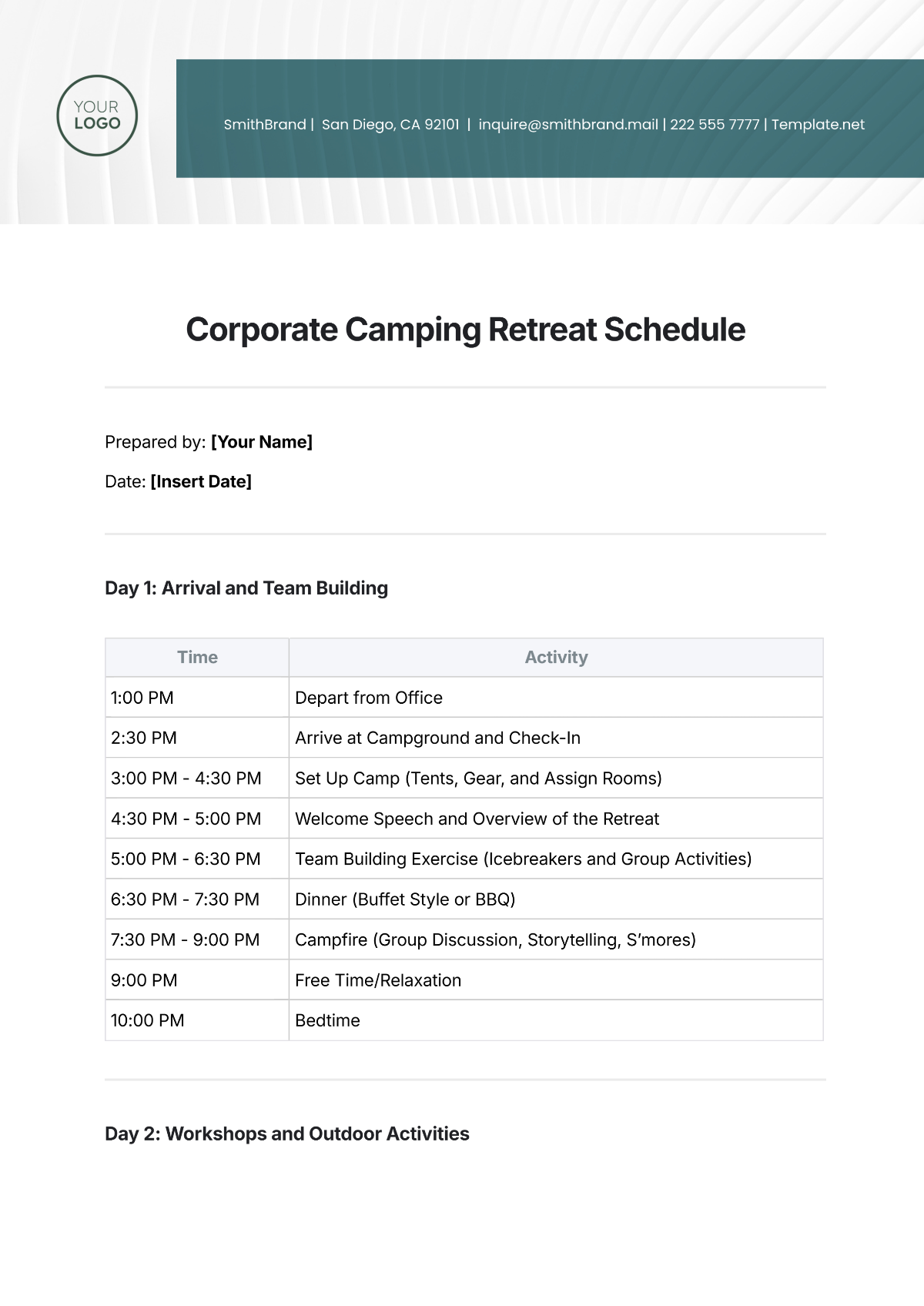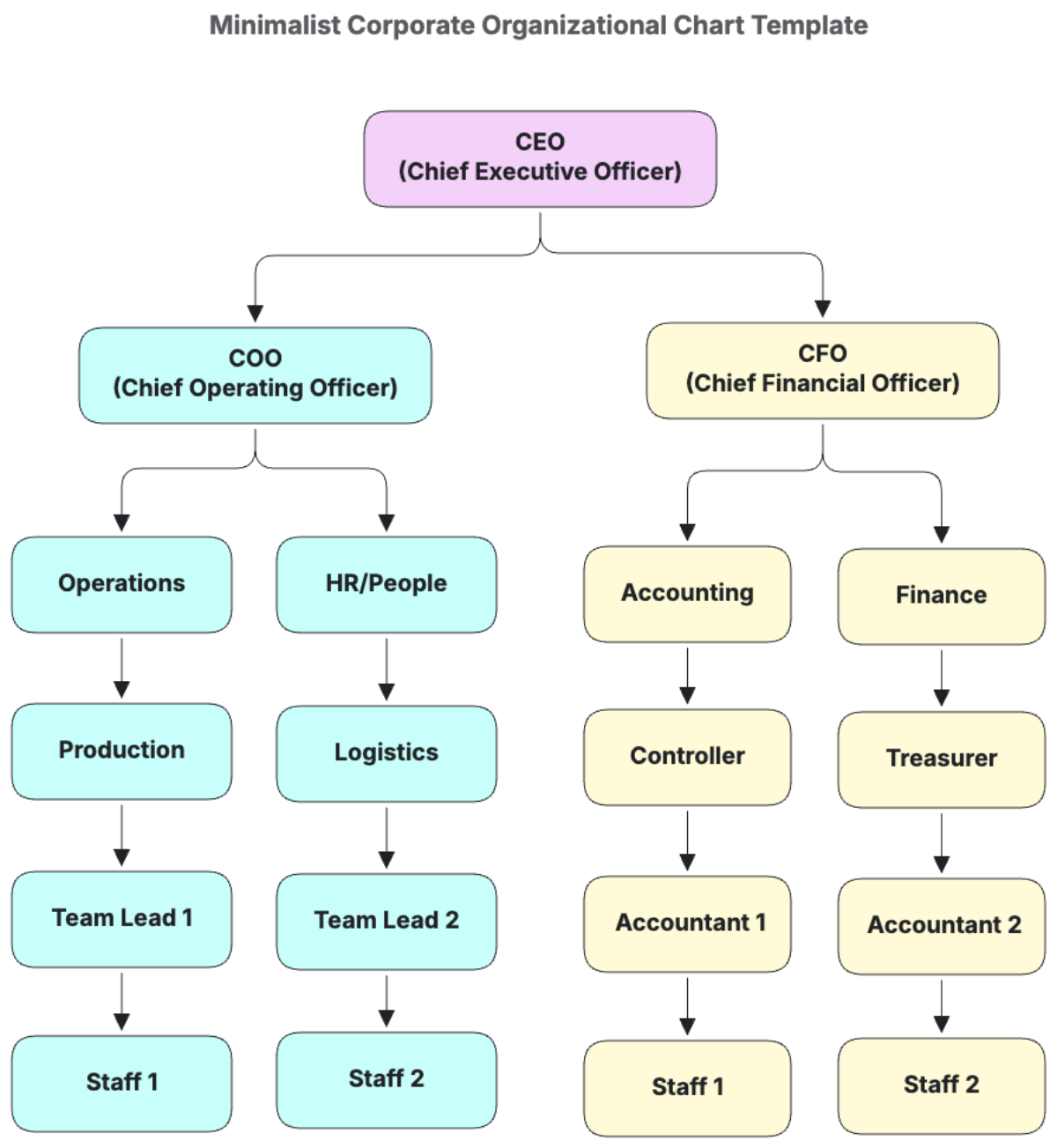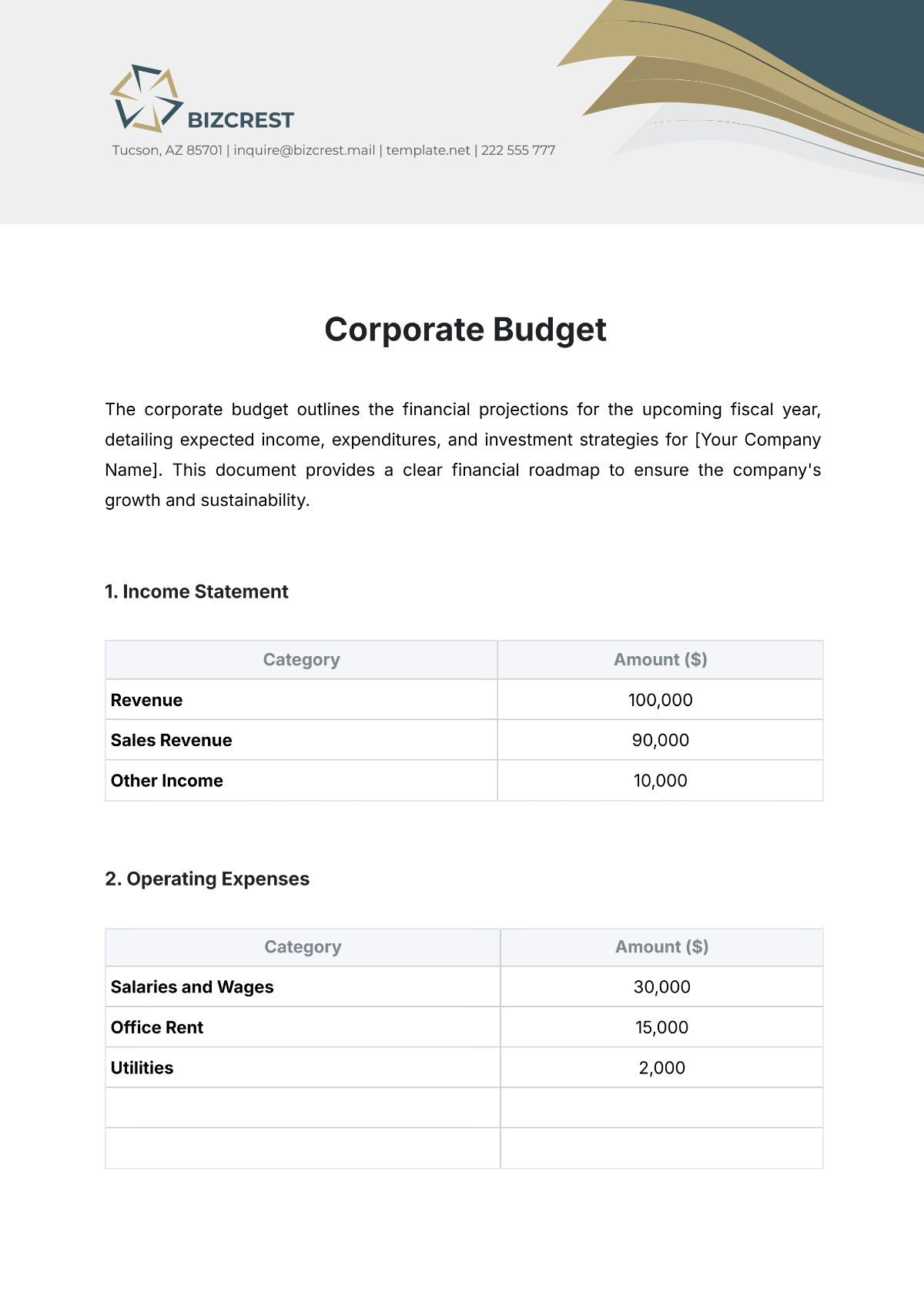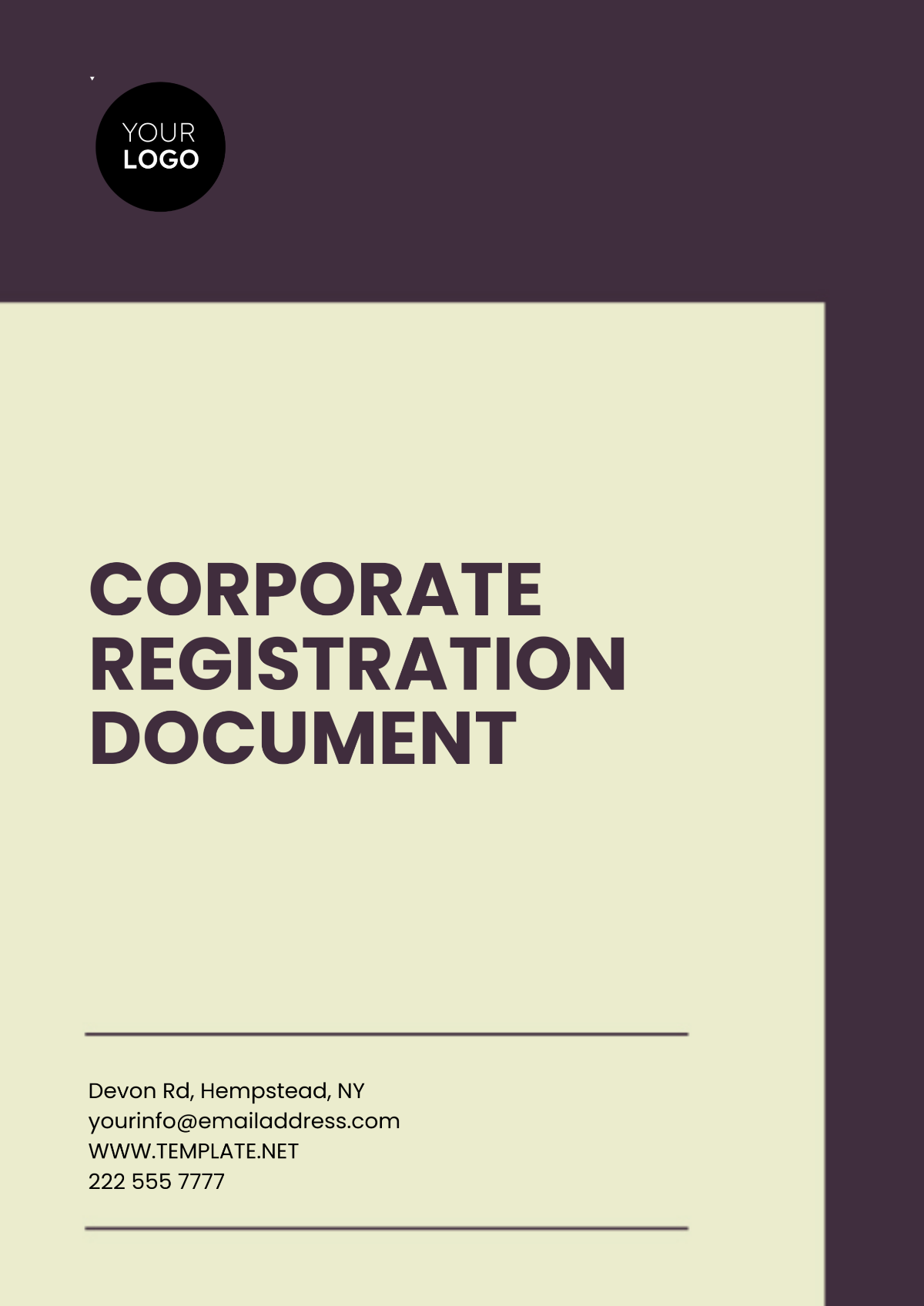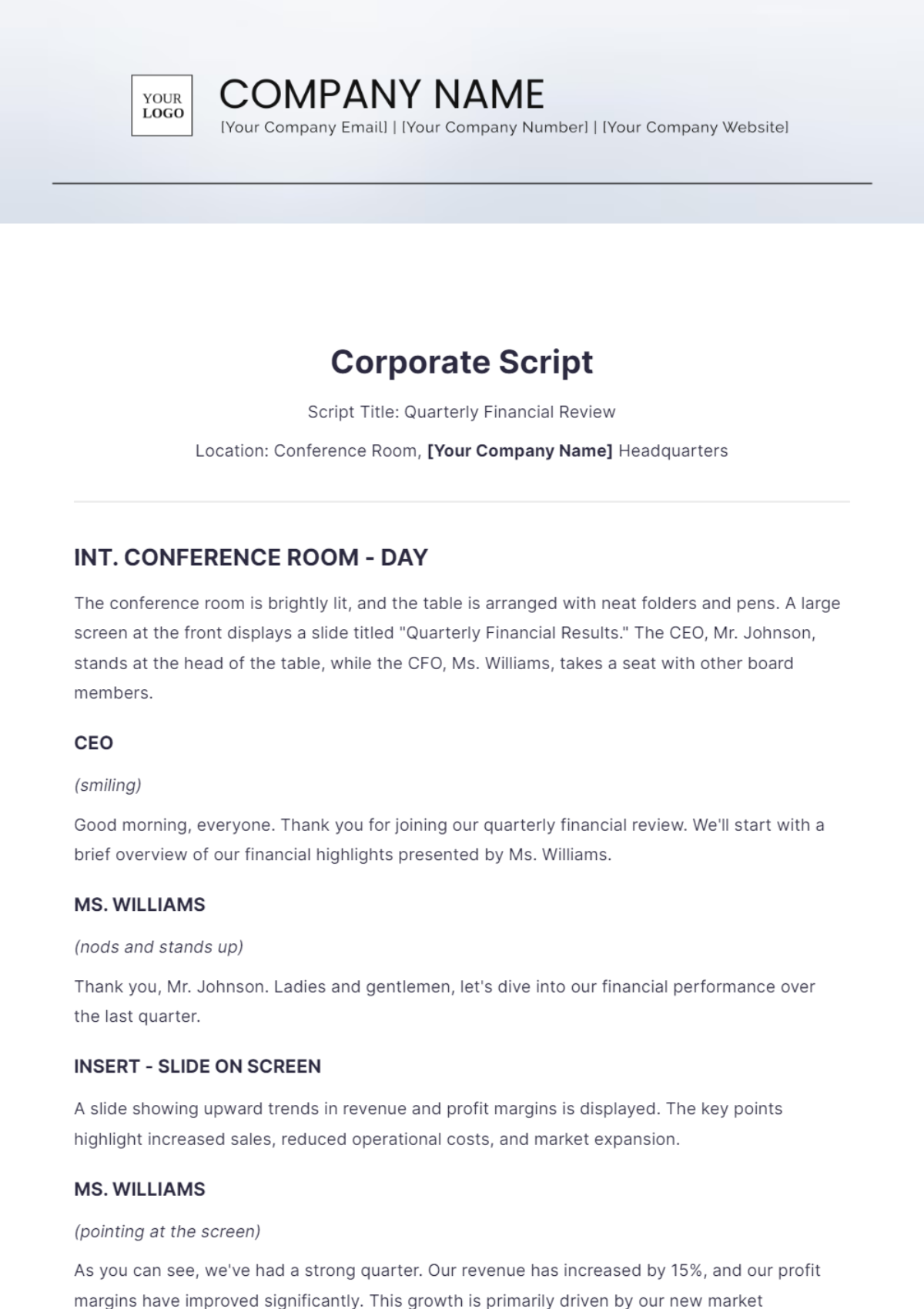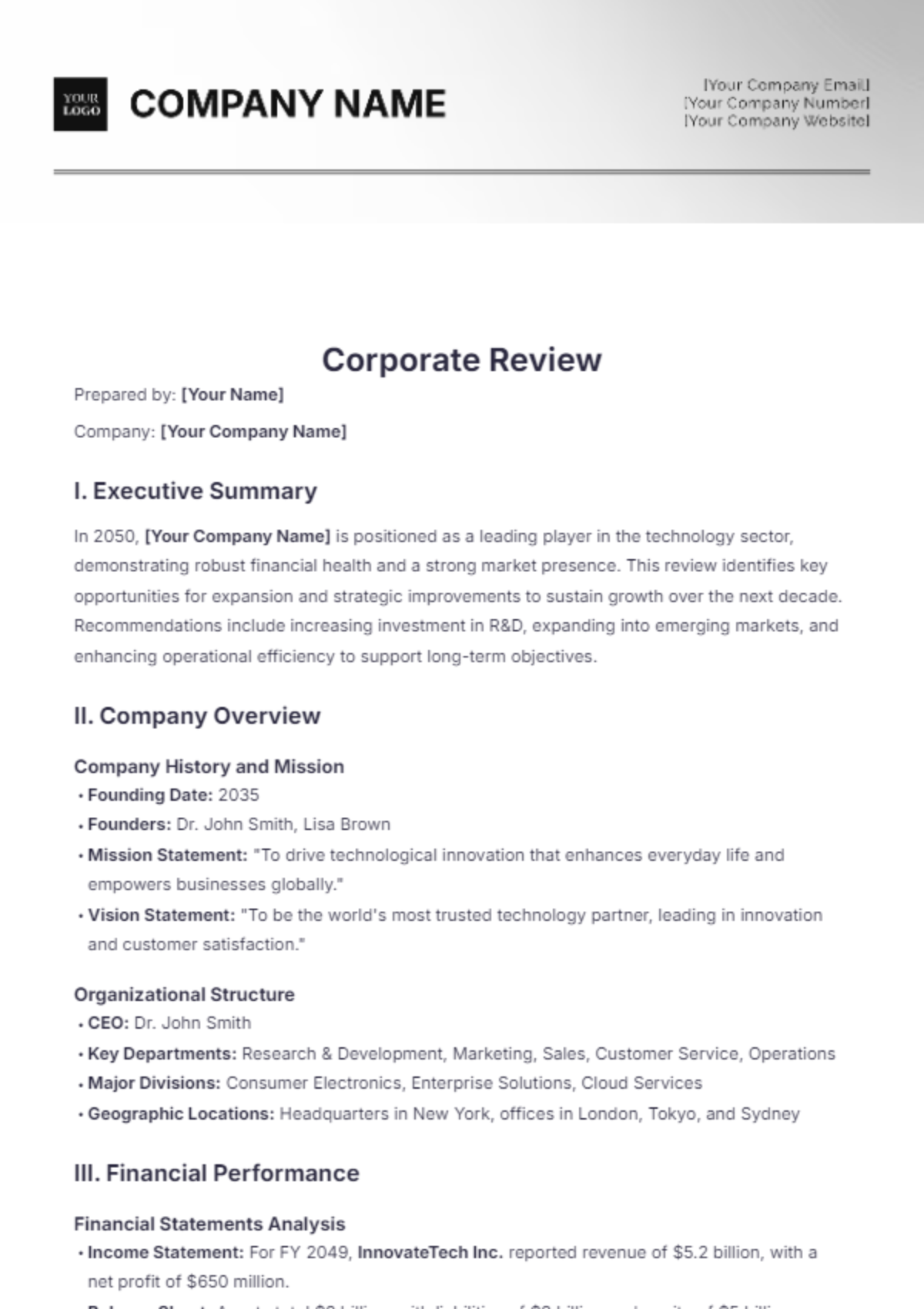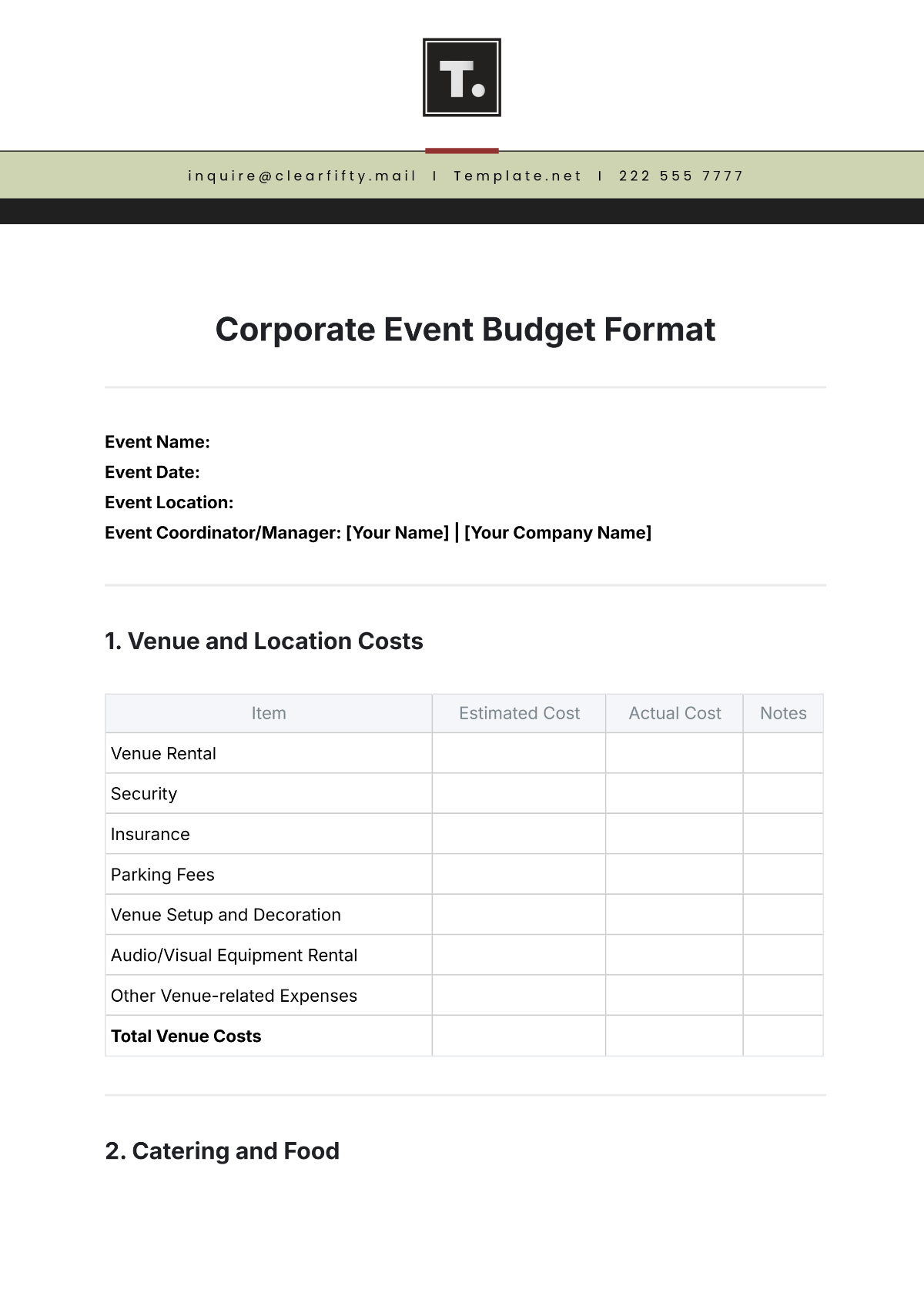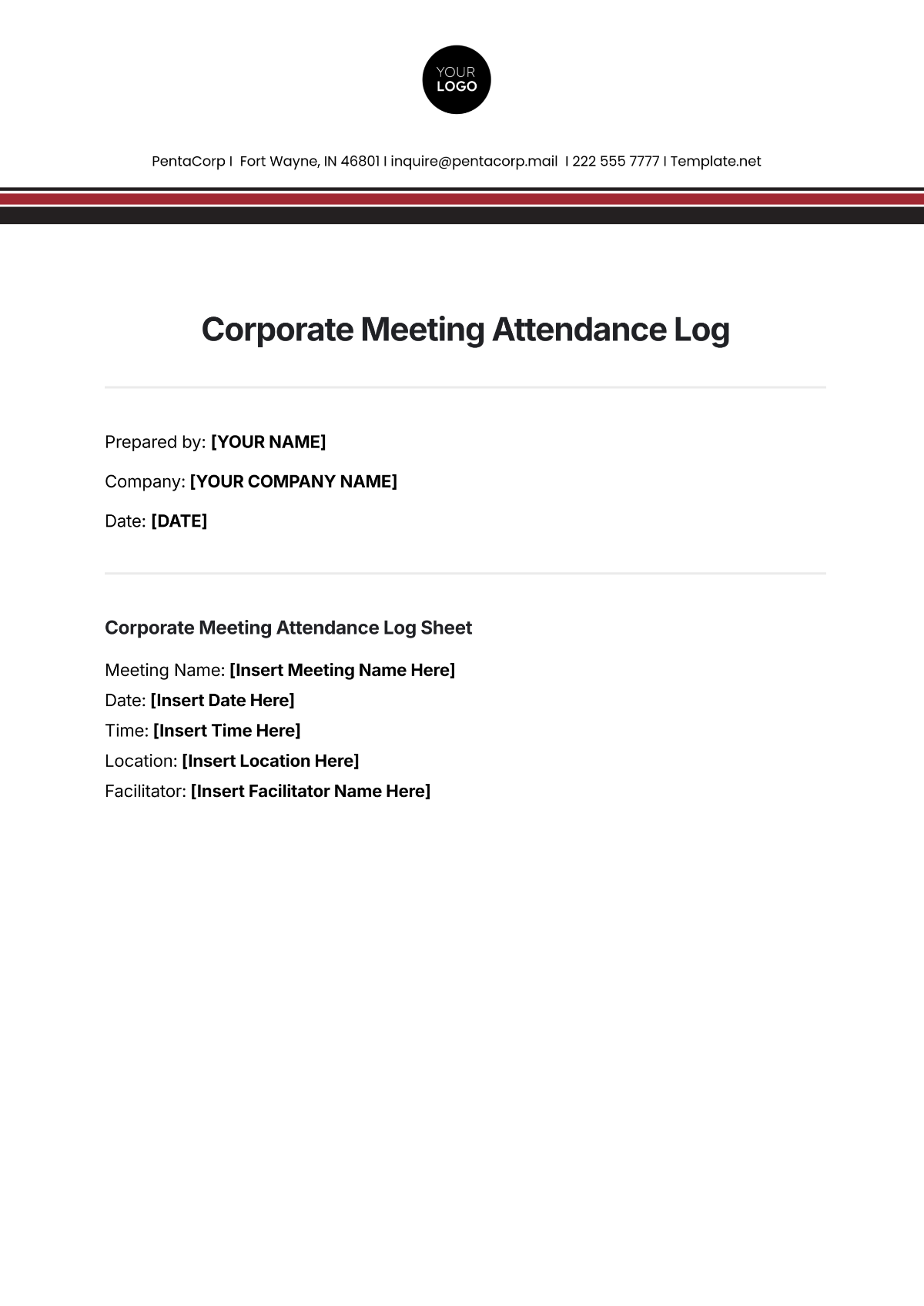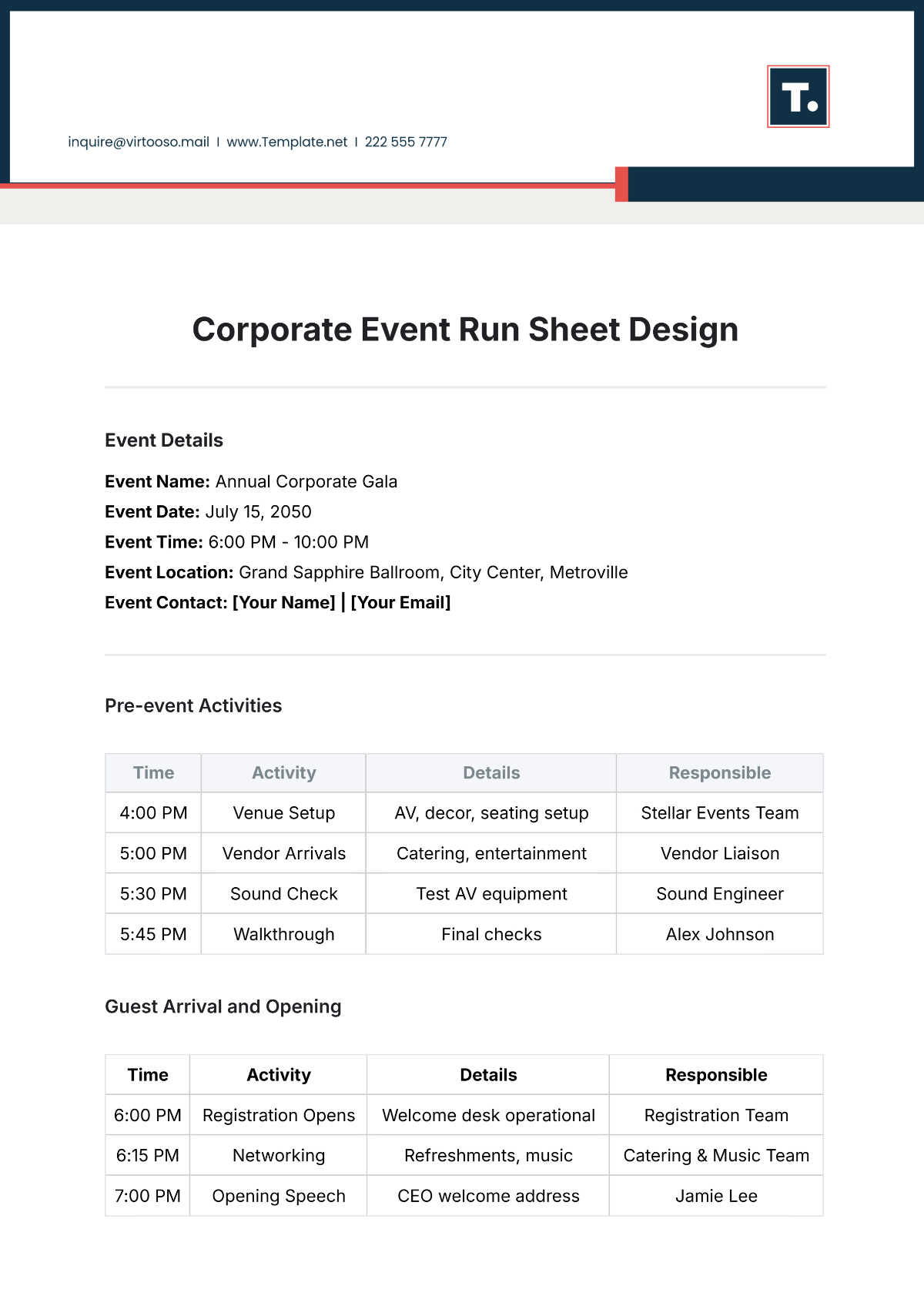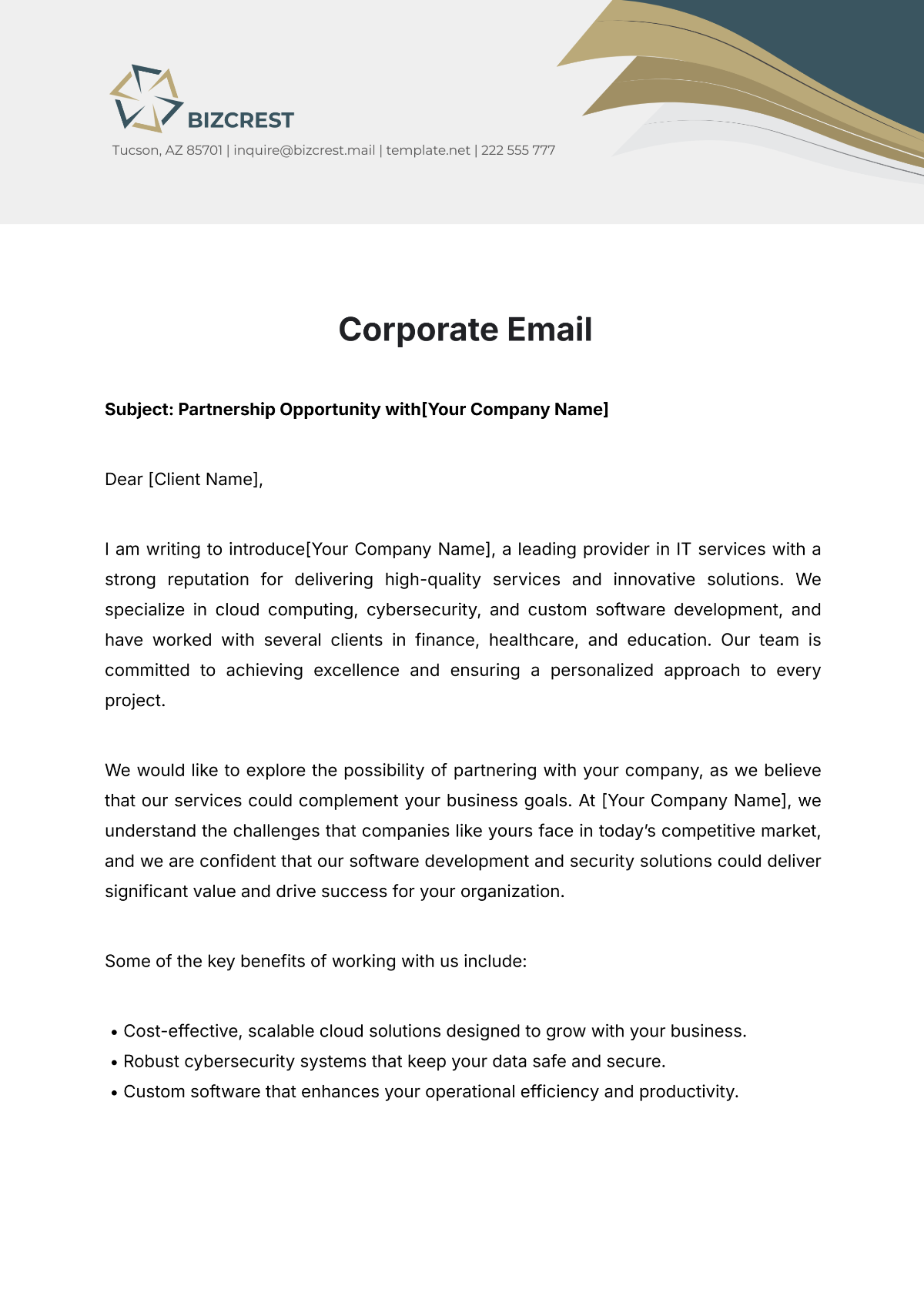Corporate Alignment Requirement
1. Introduction
In today's dynamic business environment, ensuring that organizational practices and strategies align with corporate goals is paramount. This document outlines the Corporate Alignment Requirement for [Your Company Name], designed to ensure that all operational activities and strategies support the overarching objectives of the organization. The goal is to provide a comprehensive framework for aligning various business functions with corporate vision and mission.
2. Corporate Objectives
2.1. Strategic Goals
The strategic goals define the long-term vision and objectives of the organization. They guide all operational and tactical planning and are crucial for maintaining corporate alignment.
Revenue Growth: Achieve a compound annual growth rate (CAGR) of 10% over the next five years.
Market Expansion: Enter three new international markets by 2050.
Innovation Leadership: Invest 15% of annual revenue in research and development (R&D) to drive product innovation.
2.2. Mission Statement
The mission statement encapsulates the organization’s purpose and primary objectives. All business activities should contribute to this mission.
Customer Focus: Deliver exceptional value and service to customers.
Sustainability: Promote environmental responsibility and sustainability in all operations.
Employee Development: Foster a culture of growth and continuous learning for employees.
3. Alignment Framework
3.1. Organizational Structure
A clear organizational structure ensures that roles and responsibilities support corporate objectives. Key elements include:
Executive Leadership: Responsible for setting strategic direction and ensuring alignment.
Departmental Heads: Implement strategies and monitor performance in their respective areas.
Project Teams: Execute specific initiatives that align with departmental and corporate goals.
Organizational Roles and Responsibilities
Role | Responsibilities |
|---|---|
Executive Leadership | Define strategic goals, oversee implementation, and ensure alignment with corporate mission. |
Departmental Heads | Develop and execute departmental strategies that support corporate objectives. |
Project Teams | Work on specific projects that align with departmental and corporate goals. |
3.2. Performance Metrics
Measuring performance against corporate goals is critical for ensuring alignment. Key performance metrics include:
Financial Metrics: Revenue, profit margins, and return on investment (ROI).
Operational Metrics: Efficiency, productivity, and quality.
Customer Metrics: Satisfaction scores, net promoter scores (NPS), and retention rates.
Key Performance Indicators
Metric | Description | Target |
|---|---|---|
Revenue Growth | Increase in annual revenue. | 10% CAGR |
Operational Efficiency | The ratio of output to input in operations. | 15% improvement |
Customer Satisfaction | Measures of customer happiness and loyalty. | 90% satisfaction score |
4. Stakeholder Engagement
4.1. Importance of Stakeholder Engagement
Effective stakeholder engagement is crucial for aligning corporate strategies with operational practices. Engaging stakeholders helps to:
Ensure Buy-In: Obtain support and commitment from key stakeholders, including employees, customers, investors, and partners.
Gather Insights: Collect valuable feedback and insights that can inform strategic decisions and improve alignment.
Enhance Communication: Maintain transparent and open communication channels to address concerns and keep stakeholders informed.
4.2. Stakeholder Identification
Identify and categorize stakeholders to tailor engagement strategies effectively:
Internal Stakeholders: Employees, management, and board members.
External Stakeholders: Customers, suppliers, investors, regulatory bodies, and community groups.
Stakeholder Categories and Engagement Strategies
Stakeholder Category | Engagement Strategy |
|---|---|
Internal Stakeholders | Regular meetings, internal newsletters, and feedback mechanisms. |
External Stakeholders | Surveys, focus groups, investor reports, and public forums. |
4.3. Engagement Process
Implement a structured process for engaging stakeholders:
Stakeholder Analysis: Identify stakeholders and assess their influence and interest.
Engagement Plan: Develop a tailored plan for engaging each stakeholder group.
Communication: Use appropriate channels to communicate objectives, gather feedback, and address issues.
Monitoring and Review: Continuously monitor stakeholder engagement and adjust strategies as needed.
5. Implementation Plan
5.1. Action Steps
To align corporate practices with strategic goals, follow these steps:
Strategy Development: Create detailed strategies for each department aligned with corporate objectives.
Resource Allocation: Allocate resources effectively to support strategic initiatives.
Monitoring and Evaluation: Regularly review performance metrics and adjust strategies as needed.
Communication: Ensure transparent communication of goals and performance metrics across the organization.
5.2. Timeline
The implementation of corporate alignment practices should follow a structured timeline:
Quarter 1: Develop departmental strategies and allocate resources.
Quarter 2: Begin execution of initiatives and establish monitoring mechanisms.
Quarter 3: Evaluate progress and adjust strategies as necessary.
Quarter 4: Review annual performance and plan for the next cycle.
6. Conclusion
Ensuring corporate alignment is a continuous process that requires ongoing attention and adjustment. By adhering to this Corporate Alignment Requirement framework, organizations can ensure that their practices and strategies consistently support their strategic goals and mission. This alignment is essential for achieving long-term success and maintaining a competitive edge in the market.




